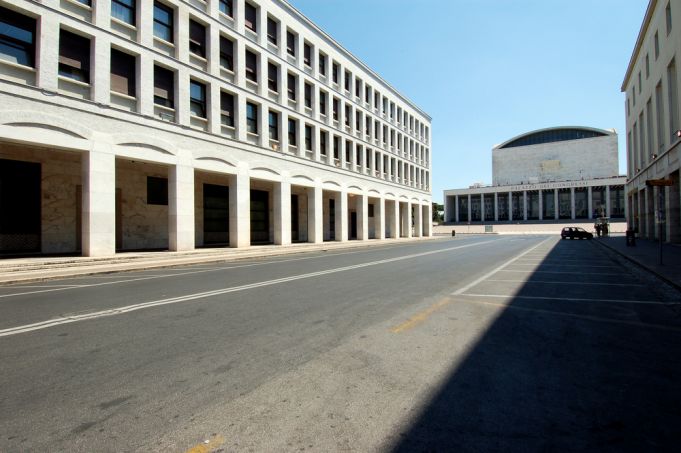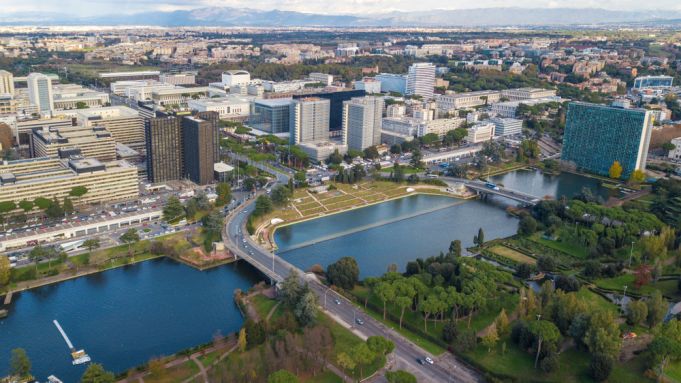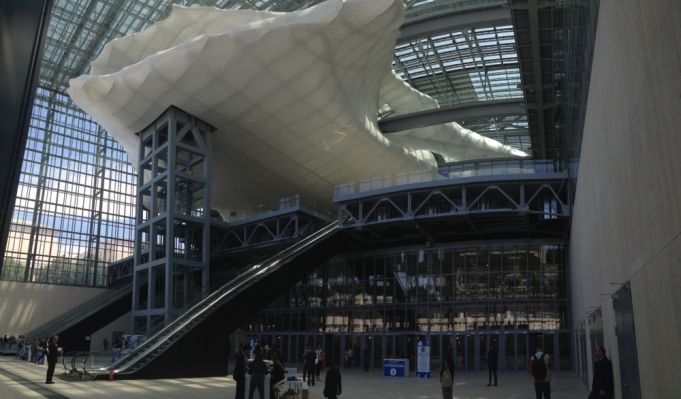EUR: When Ancient Meets Modern.
EUR (which is the acronym of Esposizione Universale di Roma, meaning Rome’s Universal Exposition) is a metaphysical district of Rome that dates back to the Fascist era.
The original project was inspired by Fascist ideology and by the classical Roman urban planning, adding the elements of Italian Rationalism. The layout of the EUR district includes wide streets, and majestic and imposing architectural buildings, that are massive and square, mostly built with white marble to recall the classical monuments of the Ancient Imperial Rome.
This district detaches from the rest of the city of Rome as its architecture is uniquely modern and presents any visitor with the perception of being in a timeless place, characterized by the sharp and tall buildings as well as the many green areas and massive artificial lake, creating a contrast between its modernity and the ancient buildings in the centre of Rome. The clean white marble buildings, the ancient roman architecture, along with the majestic fountains make this district seem like it was meant to be the return of the Ancient
History of EUR

Roman Empire with the influence of the Fascist ideology. So, how did this district come to life and how did it change throughout the years?
In 1937, the Italian dictator Benito Mussolini announces the start of construction for this district, designing a project planned to celebrate the twentieth anniversary of the March on Rome in 1942. Due to the Second World War, an anti-bomb bunker was constructed 14 meters underground extending for 475 sqm in order to continue the construction regardless of the war.
However, after the events of the war and the loss of Mussolini, the exhibition never took place and the district was abandoned in 1942, the same year in which the original project was intended to be inaugurated. In between the 1950s and 1960s, the EUR district was revived, and new buildings were constructed, such as the Palazzo dello Sport (Sport Palace) in occasion of the Olympics Games of 1960, as well as the Piscina delle Rose (Rose Swimming Pool), an Olympic outdoor pool in the Central Park of the Lake.
The ambitious urban and architectural complexes attract tourists and inhabitants with the magnificence of buildings that rise mighty to the sky of Rome. EUR’s rationalist architecture characterizes many monuments that distinguish this district to the rest of the city. A symbolic monument of the district is the Square Colosseum, which is a nickname given to the Palazzo della Civiltà Italiana (Palace of Italian Civilization), and was built by the architects Guerrini, La Padula and Romano inspired by metaphysical art. The district also benefits a sophisticated and well- connected system of underground galleries 4 meters below the ground that extend for 18 kilometres and provide water to the artificial lake as well as the rest of the district, as well as the optic fibre for a faster internet connection for the inhabitants.

The structural design and internal psychology of the district’s architecture was commented by the notorious Italian director Federico Fellini, during an episode of a series released in 1970 by RAI.
In this series, Fellini walks through the architectural scenography of EUR and illustrates the reasons that led him to choose the metaphysical and abstract scenarios of this district to set some of his films, such as La Dolce Vita (1960) and Boccaccio ’70 (1962).
According to Fellini, the space of EUR provides its visitors with “an artistic atmosphere as if you were in a painting, beyond any law except perhaps the aesthetic ones. A place where there are no relationships other than those with solitude and objects.” This reflection argues that this district hosts a metaphysical environment in which the monumental architecture is uniform and in harmony with its wide surroundings.
The urban development of EUR has continued to this day with the construction of the new Congress Centre called La Nuvola di Fuksas (Fuksas’ Cloud), a massive keel anchored to the ground by three solid metal feet, placed inside a giant glass and steel container and covered by an opalescent white fabric giving the complex the appearance of a cloud. Today, EUR is a Roman urban area in which most of the buildings are owned by the state-owned company EUR Spa.

EUR has thus become the most important financial pole of the capital with the presence of numerous banks, such as Unicredit, BNL and others, as well as public and private buildings, such as Poste Italiane (Italian Post Office) and theItalian multinational oil and gas company (ENI). The district also hosts the Museum of Roman Civilization and the National Museum of Popular Arts and Traditions, affirming its strong cultural connection to the past. Ph: MarcelloCerauloPortfolio / Shutterstock.com
Top ph: Marco Rubino / Shutterstock.com
General Info
View on Map
Introducing the EUR district in Rome
EUR, Roma, RM, Italia





















